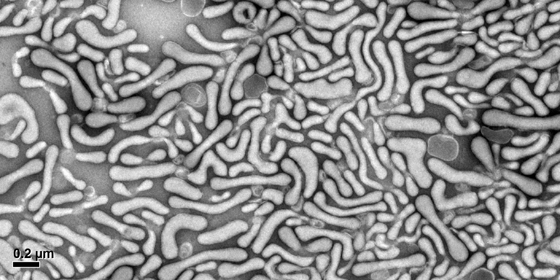Part of standard prenatal care for a pregnant woman is to test her blood for antibodies against the red blood cells of her baby, such as anti-Rhesus D antibodies. An incompatibility can result in hemolytic disease, where the mother’s antibodies attack fetal red blood cells. The development of a therapy for Rhesus D incompatibility was one of the major success stories of medical research in the 1960s.

Jeanne Hendrickson, MD
Although Rhesus D is the most common troublemaker, other anti-red blood cell antibodies such as those against the Kell protein can also cause hemolytic disease of the fetus. The origin is often from sensitization related to previous blood transfusions. At a recent seminar, pediatric hematologist Jeanne Hendrickson described a recent case that illustrates how serious this condition can be. Hendrickson is associate medical director of Children’s Healthcare of Atlanta’s Blood and Tissue Bank, and an assistant professor in pediatrics and pathology at Emory.
Early in her second pregnancy, a woman had developed anti-Kell antibodies, causing the baby to develop anemia and the early stages of fetal heart failure. Several intrauterine transfusions, which carry a risk of miscarriage, were required. At one point, Hendrickson says, the mother was in the http://www.raybani.com/ hospital for a week while doctors looked for compatible blood. When the baby was born, he was very pale and continues to need medical care, because anti-Kell antibodies interfere with red blood cell development.
Unfortunately, there is nothing analogous to RhoGam (the standard therapy for Rhesus D) for this situation. Today, 6 out of 1000 pregnancies are affected by red blood cell immunization. And despite its success, Hendrickson says some mystery remains about exactly how RhoGam works.

First author Sean Stowell, MD, PhD
She and her colleagues have a new paper in the journal Blood describing an animal model for hemolytic disease of the fetus and newborn involving anti-Kell antibodies. Postdoc Sean Stowell is the first author Ray Ban outlet of the paper. This is the first animal model of anti-red blood cell antibodies generated through pregnancy – previous rabbit experiments dating back to the 1950s involved transfusions and/or immunizations.
The model uses mice that have been engineered to produce a human form of Kell protein on their red blood cells. When male mice positive for this extra gene mate with females who don’t have it, the litters are smaller and some of the pups are anemic or stillborn. The authors say that the model could provide a platform for studying how anti-red blood cell antibodies develop, as well as potential therapies.
Another recent paper from Stowell and Hendrickson describes a similar mouse model involving anti-red blood cell antibodies that develop because of transfusions rather than pregnancy. Between 3 and 5 percent of patients who get a blood transfusion will develop antibodies against Ray Ban online something on the red blood cells they received, making future transfusions possibly more problematic.
At the seminar, we learned that Hendrickson will be moving to Yale University later this summer. We wish her good luck at her new job.







